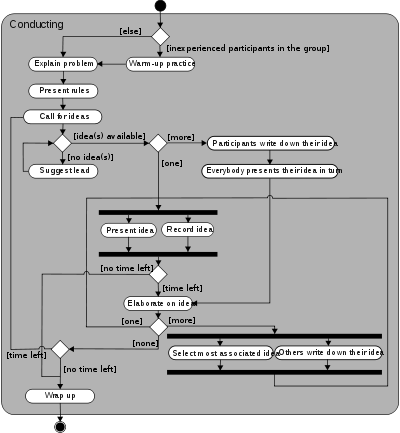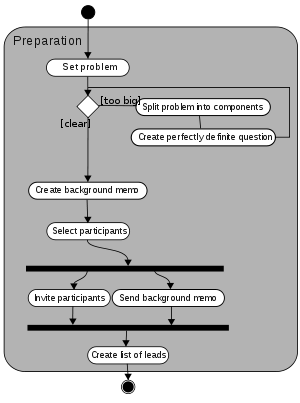Difference between revisions of "Brainstorming"
From Learning and training wiki
| Line 15: | Line 15: | ||
| − | {{ | + | {{Tool|Step by Step| |
| − | == | + | ==Running a Brainstorming Session== |
#Warm-up, to make the participants feel in a criticism-free environment; | #Warm-up, to make the participants feel in a criticism-free environment; | ||
Revision as of 15:14, 22 July 2009
Group of creativity methods first popularized by A.F. Osborne in 1941, in which all member of a team are encouraged to generate and share ideas on a specific topic. The aim is to put the participants in the condition of creating original ideas and developing unusual approaches to a problem. Therefore, the group should feel free to express the ideas spontaneous just focusing on quantity, since every evaluation must be postponed later in the process. Following these ground rules in brainstorming can reduce the inhibitions in the group, including self-censorship, and enhance creative thinking:
Utility of brainstormingWhether brainstorming can increase either quantity or quality of ideas generated is controversial, because problems such as distraction and evaluation anxiety can derail the process. Although brainstorming sessions may not enhance the productivity of groups in terms of the quantity and/or the quality of ideas generated, they may still help to increase work enjoyment and make team working better. [1] See also Nominal Group Technique |
Running a Brainstorming Session
 |
References
- ↑ Wikipedia (26 May 2009), www.answers.com (27 May 2009)
- ↑ www.answers.com (27 May 2009)
